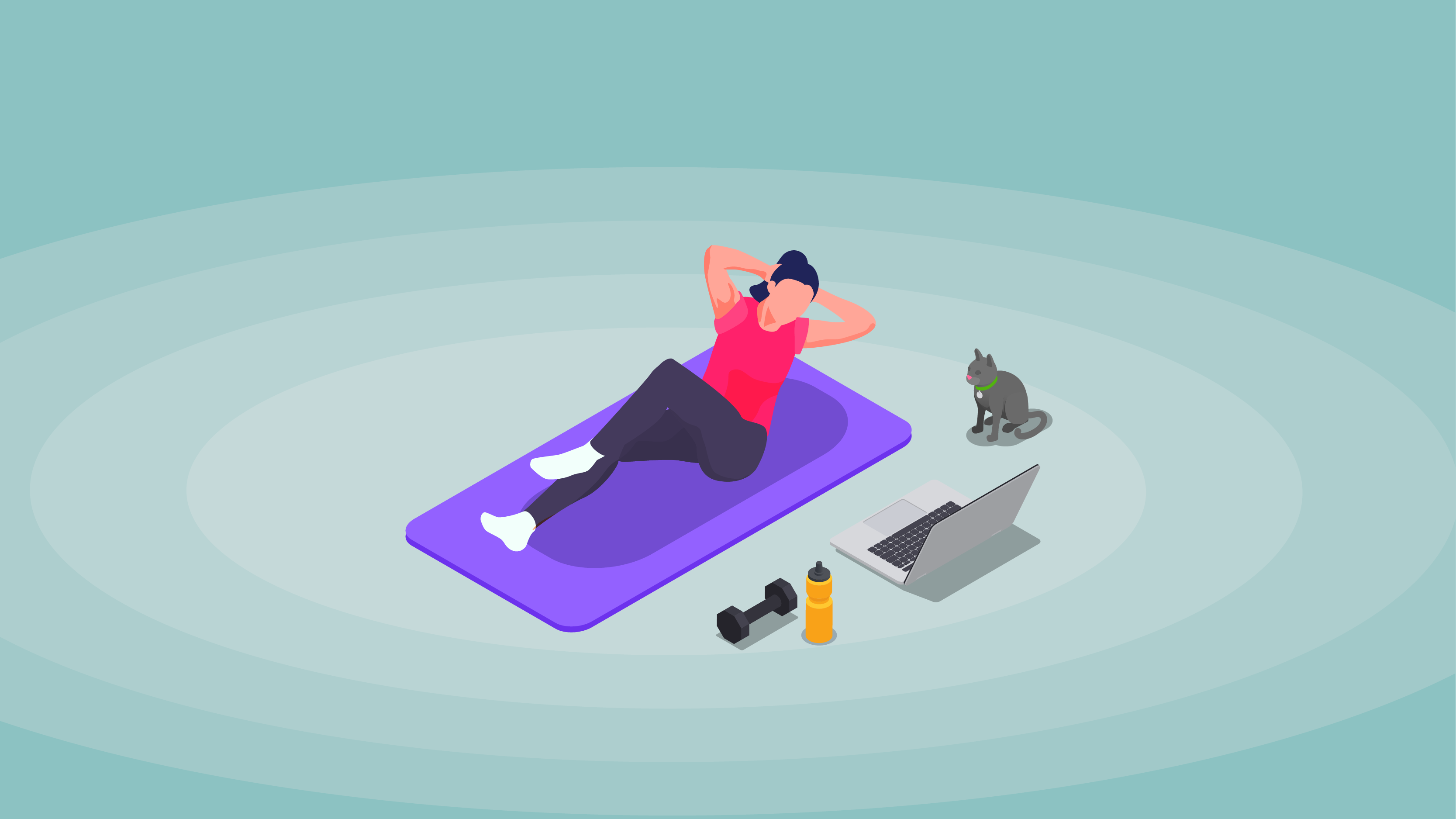
Introduction
Exercise on an ongoing schedule plays a crucial role in the never-ending quest for a vigorous and nutritious existence. The Centers for Disease Control and Prevention (CDC) shines a light on the way to great health as a wellness guide, advising an impressive 150 minutes of moderate-intensity exercise every week. This strong recommendation emphasizes the significant influence of mobility on general health.
Read More – Don’t Forget These 6 Gym Bag Essentials
However, while exercise duration and intensity are unquestionably important, wise use of recovery time during a training routine is a sometimes-ignored aspect of optimizing fitness. The purpose of this post is to examine tactical methods for streamlining your fitness regimen and increasing training efficacy by reducing pointless rest periods.
The Significance of Recovery After Exercise
Before discussing how to reduce downtime during exercises, let’s emphasize how important recuperation is after a workout. It’s critical to look after your body after working out to promote muscle growth, lower the chance of injury, and increase the efficiency of your next workout.
The following three professional advice points discuss the significance of recovery:
First Step: Take a Break
For the body to heal microscopic injuries in muscles brought on by activity, it needs enough sleep. Exercises that involve switching up your muscle groups and allowing yourself at least 48 hours to recover can help you become stronger and more resilient. J.R. Watkins Cooling Gel can help relieve muscle tension, hastening the healing process.
Step No. 2: Add Active Recuperation
On “off” days, active recuperation entails mild exercise, stretching, and foam rolling. Make sure that your active recovery is effective without adding to the stress of your main workouts. When used in conjunction with active warm-ups, foam rolling in particular has been demonstrated to relieve tense muscles and enhance strength and speed.
Step No. 3: Schedule Gratitude Time
Studies indicate that cultivating thankfulness quickens the body’s recovery process. Whether you choose to express gratitude through journaling, affirmations, or other means, including it in your daily routine not only promotes overall happiness but also helps with physical healing.
Techniques for Cutting Down on Downtime During Exercise
Now, let’s explore tactics that enhance the above-discussed recovery phases, with an emphasis on reducing idle time throughout your real workouts:
1. Make careful planning a priority
Careful planning is essential to any successful fitness program. Develop a varied workout regimen that includes exercises that target different muscle groups to reduce the need for extended rest periods. This all-encompassing method maintains an increased heart rate so that you burn calories continuously during your workout. By carefully organizing your schedule, you can make the most of your time at the gym and develop a comprehensive, effective exercise regimen that will help you achieve your goals for health and wellness.
2. Practicing Circuits for Smooth Transitions
Take advantage of circuit training’s efficiency, which involves moving workouts from one to the next smoothly and with little time for rest. Perfect for people looking for a full-body, high-intensity workout, this method not only improves cardiovascular fitness but also drastically cuts down on downtime, meaning you will always be involved in your exercise regimen. Using circuit training increases your workout’s efficacy and gives it a dynamic rhythm that keeps your body engaged and responsive, helping you move more quickly toward your fitness objectives.
3. Employ Compound Movements and Supersets
Use supersets to increase the intensity of your workout and make your programme more efficient by combining exercises that target different muscle groups one after the other. Incorporate this with compound exercises to work several muscle groups at once, making the most of your time for a comprehensive and successful fitness regimen. This dynamic approach increases the intensity and efficiency with which you move towards your fitness objectives.
4. Make the Most of Your Downtime
Rest is important, but to make the most of your break, you should adjust your intervals to your fitness level. Use fitness apps or clocks to help you stay disciplined and tailor your rest periods to meet your endurance, strength, or hypertrophy goals. This deliberate method makes sure that even your periods of relaxation strategically advance your fitness journey, matching your individual objectives and optimizing the effectiveness of your exercise regimen.
5. Include Active Recovery
Incorporate active recovery into your workout to make it more intense. Try dynamic exercises like mobility drills, light running during intervals, or stretching. This reduces overall downtime and minimises stiffness by keeping your muscles active. Active recovery improves blood circulation and flexibility, which helps you perform at your best during your workouts and advance your holistic fitness journey. This way, every minute you spend working out benefits your general health and athletic ability.
6. Continue To Fuel And Hydrate
Make diet and water your top priorities to avoid weariness. Before working out, have a well-balanced lunch or snack, and make sure you’re getting enough water. Keeping your fuel levels in check maximizes energy and lessens the chance that you’ll need to take long breaks when training. This proactive strategy improves the overall efficacy and efficiency of your workout in addition to building your endurance. Recall that your body can better handle the demands of an intense workout regimen if it is well-nourished and hydrated, which will help you get the most out of each session.
7. Techniques For Mindful Breathing
Use conscious breathing exercises to improve concentration and heart rate regulation. Controlled breathing keeps a steady pace, speeds up recovery in between sessions, and cuts down on needless rest. During your fitness programme, use your break moments to practice diaphragmatic breathing and box breathing exercises to increase your general mindfulness and improve your physical and mental health.
8. Effective Equipment Utilization
Plan your motions carefully to reduce the amount of time you spend switching between machines and maximize your workout efficiency. Reduce downtime by scheduling your routine around designated gym facilities or making sure that the equipment is conveniently available. This strategy helps your workout flow more naturally and maximizes the amount of time you spend working out. It also frees up your time to focus on the exercises that will have the biggest impact on your fitness goals.
Conclusion
In conclusion, adopting a more active and healthy lifestyle needs more than just regular exercise; it also calls for a calculated approach to maximise each component of your fitness regimen. Understanding the significance of post-exercise recovery lays the groundwork for improved muscle growth, reduced risk of injury, and more effective training. The three-step recovery approach emphasises the overall aspect of fitness, moving from getting enough sleep to actively recovering and incorporating thankfulness.
Furthermore, proper planning, dynamic techniques like circuit training, and the use of compound movements and supersets all contribute to minimising downtime during workouts. These strategies help make working out fluid, interesting, and time-effective. Methods like conscious breathing, feeding, and hydration, in addition to the efficient use of equipment, increase the overall efficacy of your exercise programme.
Read More – 4 Tips For Getting Into A Morning Workout Routine
Essentially, you can create a sustainable and fun fitness routine while ensuring that every minute spent exercising makes a meaningful contribution to your health goals by adopting these all-inclusive approaches. By finding a harmonious equilibrium between recovery and intensity, efficiency and diversity, these tactics open the door to a dynamic and satisfying dedication to your health. The conscious development of a purposeful exercise regimen is about enjoying the process of being healthier and stronger—it’s not just about finishing the race.
Read More – Five Ways To Encourage Your Friends And Family To Join You In The Gym



